The Rental Economy Shapes Business Communications
Over the last 20 years, the disparate technologies that have powered business communications across industries are gradually merging. What used to be 10 different on-premise tools and systems are quickly becoming integrated into platforms with multiple apps that span your organization. These changes are leaving business leaders asking…
- Do I own it? Rent it? Partially own some of it and rent the rest?
- If I rent, what do I actually own?
- Should we pay in one installment? Or pay for it as an on-going service?
- Will it be secure?
- What are the hidden cost in the contract that I forgot to ask?
- Will it work or cost me my job?
- Who will support it?
All these questions and more bombard today’s business leaders as they sift through the endless sea of technology innovation and change. You want to invest in technology and infrastructure that will grow with your organization. You want to make wise investments that will accommodate a younger, less risk-averse workforce. But you still need to keep your data secure while providing the flexibility cloud communication and features have to offer.
Nowhere is this trend more apparent than in business communications. Disparate communications are turning into holistic clients – unified communications – to deliver voice, video, instant messaging, collaboration, and more. But it also means that you rely on a single piece of mission-critical software living on your data network. In addition, you must navigate other business communication variables such as; cloud vs. on-premises, CapEx vs. OpEx, Managed Service or AWS, etc.
These variables are the result of the widespread evolution toward something Packet Fusion calls, “the Rental Economy.” Business success in the Rental Economy isn’t just about shifting consumption models or integrating systems. It’s about how your organization keeps up with the varying demands on how technology is consumed; how different purchasing models impact the way your customers interact and buy from you and how you leverage technology in the Rental Economy to do more with less (and do it better). Ultimately the Rental Economy is about your ability to understand your own processes, applications, and needs so you can stay abreast of industry trends and leverage technology, in different ways, across any platform of your choice at any time without significant upfront investment.
These demands create a tall order for business leaders making technology choices for their employees and the organization, and that is why we decided to tackle this topic. We hope you will find this blog both insightful and inspirational as you journey to leverage technology in an on-demand, evolving economy.
Forms of Communication Don't Die, They Just Change
In this age of instant messaging and social media, it’s become popular to say that traditional voice communication is dead. While the desktop phone is no longer required to do business, voice is still the “critical app” to build relationships. It’s evolving, we are just consuming it differently. For example, desktop phone to softphones, basic cell phones to smartphones, and now Open Voice solutions that deliver Voice via web browsers utilizing WebRTC.
Three Key Areas of Business Phone System Communications are Driving Us Into the Rental Economy
1. Connectivity Changes
Years ago, businesses had two separate on-premises networks. A Cat 3 network for voice and a LAN for data traffic. This approach to connectivity worked well but wasn’t exactly feature rich. These disparate networks turned into two LANs with a physical cable connection to handle routing capabilities and communication demands on the network. Then came convergence – Layer 3 routing enabling voice and data to pass over the same network. This unlocked the current depth of Layer 7 applications that make up unified communications today. Then applications left the building and went into the cloud. This business model enables a pay per use model vs an all or nothing model we had been so accustomed to.
2. Interaction Center Changes
The traditional call center managed business with a single mode of communication. It evolved into a multi-modal “contact center” supporting email, fax, and phone. The modern contact center has become a central point from which inbound and outbound customer communications—including voice calls, email, social media, and Web chat—are managed and supported to continuously meet the adoption of new customer experience (CX) channels.
With analytics, business intelligence, and workforce management, you could boost efficiencies within that multi-modal contact center. Now, artificial intelligence, augmented reality, are all taking efficiency to another level. And with the Internet of Things demanding more monitoring, we’ll need to continuously increase efficiency. As technologies evolve faster and faster, it‘s getting incredibly hard to stay on top of it all and truly implement everything it into your environment. Because the latest cloud technologies are based on Micro Services, new features can now be introduced on weekly basis without any need for downtime or disrupting upgrades. These trends are pushing customer experience toward a consumption-based, Rental Economy contact center.
3. Infrastructure Changes
Remember when new applications meant new server deployments on premises? Eventually, you had multiple servers all operating at 10% utilization. Putting them together made sense, but the operating systems didn’t allow it. Then came on-premises virtualization and to co-location usage and managed services. Now, we’ve reached the point of infrastructure as a service with AWS, Azure, and others. By shifting to a consumption model, you get the resources you need on a minute-by-minute basis. Even more significant is our move to simplify and consolidate tools and infrastructure into a more simplistic and consolidated platform. One umbrella, on-demand for all major communication needs is the direction of today’s rental culture.
Changes in connectivity, contact centers, and infrastructure demonstrate the shift toward everything-as-a-service and cloud prominence. It’s the rise of the Rental Economy. Where do you fit into the Rental Economy? Listen to a Pre-Recorded Session on the Rental Economy and Finding Your Fit.
What is the Rental Economy?
Let’s take a step back for a second and define the Rental Economy. Much like the changes mentioned above, there’s one category, in particular, that’s driving the Rental Economy—purchasing changes.
As the next generation gains more decision-making power, they bring their purchasing habits into the world of business communications. They don’t necessarily value ownership. Like the rent-by-the-hour scooters in San Francisco and Santa Monica that allow you rent, ride and leave the scooter wherever you need, today’s upcoming workforce is accustomed to renting everything from cars, homes, and equipment all the way to scooters. And what do they do value is simplicity, choice and on-demand availability.
Companies like Uber and Task Rabbit are thriving in the wake of these shifting purchasing patterns. And in the Rental Economy, businesses of all industries and sizes are following suit by embracing the pay-as-you-go consumption of cloud-based services.
This trend even extends to the operational side of your business. The days of a workforce full of W2 employees staying with your company for 30+ years until retirement are disappearing. The gig economy is all about a new employment experience and it’s a subset of a Rental Economy.
The bottom line is that whether you’re talking generally about a business or about unified communications, specifically—it is all about choice and experience.
What the Rental Economy Means to Business Leaders
The simple fact is that every business has two options; Either evolve or fade into the backdrop of how business used to be done. Embracing change and continuously overcome challenges is the only way forward. This is the mindset we’ve adopted at Packet Fusion. In addition, our customers are expecting more from us now than ever before. More than just installing a new communications solution, our customers require thought leadership, consulting, a deeper knowledge base, workflow assistance, and more.
These new customer demands (and the persistent pressure to deliver at lower costs) mean we need to find ways of integrating into more complex environments. And that means having skillsets on hand that can stay ahead of changes in virtualization, CRM, SD-WAN, collaboration, contact centers, SIP technology, business processes, Layer 7 applications, and more.
One of the complicating factors of the Rental Economy is the fact that the communications industry is broadening its reach into everyone else’s business. For example, Cisco bought Broadsoft and is entering the video space; Slack is adding file sharing and voice; BlueJeans is adding collaboration and PBX, and AWS is pushing collaboration and contact center support. Choices are great and investing in the latest-and-greatest tools can propel your business. But more than anything, we have to get better at understanding our processes and applications on a higher level to make more efficient Rental Economy choices.
Where do you fit into the Rental Economy?
This is where Packet Fusion can help.
How Packet Fusion Can Help You Make Plans for your Communications in the Rental Economy
It can be challenging to allocate the time and resources necessary to sift through all the communication choices in this evolving industry. Finding the right partner to assist you isn’t as easy as comparing feature sets. Every vendor will increasingly promote the same capabilities and tools such as desktop clients, voice, conferencing, presence, single-number fax, desktop sharing, visual voicemail, multi-party video, task assignment, find/follow me, instant messaging, collaboration, and more.
When you select a communications technology partner, you should expect a three-fold review of your business processes and applications.
Your Communications Partner Should Review with You:
- Business Processes and Applications: Your technology partner should know exactly what makes your business tick. That means gaining a full understanding of your email systems, contacts repositories, CRM, video solutions, IM/chat usage, HR systems, payroll systems, compliance solutions, security appliances, cloud applications, and more.
- Interaction Center: Most businesses have evolved far beyond a simple call center. Your technology partner needs to understand what comprises your unique interaction center. That includes time zone coverages, IVR solutions, Internet of Things adoption, AI usage, analytics reporting, workforce management systems, quality management, social media integration, etc.
- Infrastructure: A comprehensive review isn’t just about processes and applications. Technology partners must understand the underlying infrastructure as well. Expect your partner to examine core/edge switching, wireless environment, LAN topology, WAN topology, SDWan, cloud access, quality of service monitoring, firewall deployments, bandwidth requirements, and hardware needs.
Only after these reviews are complete should your partner be able to recommend products are the best fit for your business.
By Matt Pingatore, CEO of Packet Fusion
Tags
Start YourCustomized Search
SOLUTION AREA
SOLUTION PROVIDERS
- 8x8 (40) Apply 8x8 filter
- Alcatel-Lucent Enterprise (50) Apply Alcatel-Lucent Enterprise filter
- AT&T (44) Apply AT&T filter
- AudioCodes (49) Apply AudioCodes filter
- Avaya (397) Apply Avaya filter
- Cisco (574) Apply Cisco filter
- Dell (11) Apply Dell filter
- Five9 (54) Apply Five9 filter
- Fuze (39) Apply Fuze filter
- Genesys (100) Apply Genesys filter
- HP (98) Apply HP filter
- IBM (171) Apply IBM filter
- Jabra (9) Apply Jabra filter
- Logitech (56) Apply Logitech filter
- Lumen (4) Apply Lumen filter
- Masergy (50) Apply Masergy filter
- Microsoft (766) Apply Microsoft filter
- Mitel (233) Apply Mitel filter
- NEC (128) Apply NEC filter
- Nectar (58) Apply Nectar filter
- Polycom (95) Apply Polycom filter
- Ramp (37) Apply Ramp filter
- RingCentral (126) Apply RingCentral filter
- Sennheiser (18) Apply Sennheiser filter
- Slack (13) Apply Slack filter
- Tata Communications (59) Apply Tata Communications filter
- Unify (186) Apply Unify filter
- Vonage Business (80) Apply Vonage Business filter
- Yealink (8) Apply Yealink filter
- Zoom (21) Apply Zoom filter
- Acme Packet (24) Apply Acme Packet filter
- Allworx (2) Apply Allworx filter
- Arkadin (22) Apply Arkadin filter
- Aspect (34) Apply Aspect filter
- BT (25) Apply BT filter
- CaféX (8) Apply CaféX filter
- CallTower (14) Apply CallTower filter
- Clarity Connect (10) Apply Clarity Connect filter
- Continuant (1) Apply Continuant filter
- Damaka (4) Apply Damaka filter
- Dialogic (5) Apply Dialogic filter
- Dimension Data (44) Apply Dimension Data filter
- Empirix (11) Apply Empirix filter
- Enghouse Interactive (17) Apply Enghouse Interactive filter
- Inference Solutions (9) Apply Inference Solutions filter
- IntelePeer (27) Apply IntelePeer filter
- IR (11) Apply IR filter
- Jive (21) Apply Jive filter
- Kurmi Software (21) Apply Kurmi Software filter
- Lifesize (33) Apply Lifesize filter
- Lightware (3) Apply Lightware filter
- Mavenir (6) Apply Mavenir filter
- Modality Systems (8) Apply Modality Systems filter
- Momentum (36) Apply Momentum filter
- Netfortris (5) Apply Netfortris filter
- NetSapiens (6) Apply NetSapiens filter
- NewVoiceMedia (31) Apply NewVoiceMedia filter
- Nureva (26) Apply Nureva filter
- NUWAVE (5) Apply NUWAVE filter
- Orange (32) Apply Orange filter
- OVCC (8) Apply OVCC filter
- Panasonic (18) Apply Panasonic filter
- PanTerra Networks (9) Apply PanTerra Networks filter
- ScanSource (21) Apply ScanSource filter
- SIPPIO (3) Apply SIPPIO filter
- Snom (20) Apply Snom filter
- Star2Star (8) Apply Star2Star filter
- StarLeaf (12) Apply StarLeaf filter
- Tadiran Telecom (2) Apply Tadiran Telecom filter
- TekVizion (9) Apply TekVizion filter
- Unimax (7) Apply Unimax filter
- Verint (41) Apply Verint filter
- Voice4Net (2) Apply Voice4Net filter
- VOSS (85) Apply VOSS filter
- Voxbone (14) Apply Voxbone filter
- West (28) Apply West filter
- XO Communications (3) Apply XO Communications filter
- Yorktel (17) Apply Yorktel filter
- Zultys (2) Apply Zultys filter
- 3CX (8) Apply 3CX filter
- ADDASOUND (1) Apply ADDASOUND filter
- Aerohive (1) Apply Aerohive filter
- Aryaka (1) Apply Aryaka filter
- Asurion (22) Apply Asurion filter
- Avnet (7) Apply Avnet filter
- Bandwidth (5) Apply Bandwidth filter
- Calabrio (5) Apply Calabrio filter
- Consilium Software (13) Apply Consilium Software filter
- Drum (5) Apply Drum filter
- ESI (6) Apply ESI filter
- Esna (16) Apply Esna filter
- Exinda (2) Apply Exinda filter
- EZuce (3) Apply EZuce filter
- GUnify (6) Apply GUnify filter
- Highfive (4) Apply Highfive filter
- Huawei (47) Apply Huawei filter
- Imagicle (3) Apply Imagicle filter
- IPCortex (1) Apply IPCortex filter
- KnoahSoft (1) Apply KnoahSoft filter
- KOVA (1) Apply KOVA filter
- Logmein (9) Apply Logmein filter
- Metropolis Technologies (4) Apply Metropolis Technologies filter
- Mutare (2) Apply Mutare filter
- NextPlane (27) Apply NextPlane filter
- Ooma (16) Apply Ooma filter
- Patton (11) Apply Patton filter
- Radish Systems (1) Apply Radish Systems filter
- Radisys (3) Apply Radisys filter
- Shango (1) Apply Shango filter
- SMART (163) Apply SMART filter
- Stack8 (1) Apply Stack8 filter
- Swyx (1) Apply Swyx filter
- TrueConf (4) Apply TrueConf filter
- UJET (13) Apply UJET filter
- Voximplant (3) Apply Voximplant filter
CONTENT TYPE
- BC Expert Insights Market (43) Apply BC Expert Insights Market filter
- BC Expert Insights Objective - Vendor Neutral (42) Apply BC Expert Insights Objective - Vendor Neutral filter
- BC Expert Insights Planning (15) Apply BC Expert Insights Planning filter
- BC Expert Insights Solution (12) Apply BC Expert Insights Solution filter
- BC Expert Insights Vendor (80) Apply BC Expert Insights Vendor filter
- BC Expert Insights Vendor Solution (145) Apply BC Expert Insights Vendor Solution filter
- BC Expert Roundtable (133) Apply BC Expert Roundtable filter
- Bcs Webinar (0)
- Bcs Webinar Registration (0)
- Best Practice (38) Apply Best Practice filter
- Buyer Guide (14) Apply Buyer Guide filter
- Case Study (29) Apply Case Study filter
- Executive Interview (145) Apply Executive Interview filter
- Expert Roundtable (450) Apply Expert Roundtable filter
- Guest Contributions (35) Apply Guest Contributions filter
- Multimedia (38) Apply Multimedia filter
- News Analysis (2081) Apply News Analysis filter
- Newsfeed Article (1303) Apply Newsfeed Article filter
- Newsfeed Article (1) Apply Newsfeed Article filter
- Thought Leadership (21) Apply Thought Leadership filter
- Vendor Collateral (211) Apply Vendor Collateral filter
- Vendor Resource Best Practices (24) Apply Vendor Resource Best Practices filter
- Vendor Resource Buyers Guides (2) Apply Vendor Resource Buyers Guides filter
- Vendor Resource Multimedia Content (4) Apply Vendor Resource Multimedia Content filter
- Vendor Resource White Paper (4) Apply Vendor Resource White Paper filter
- Webinar (13) Apply Webinar filter
- Webinars (7) Apply Webinars filter
- White Paper (64) Apply White Paper filter
MORE FILTERS
INDUSTRY
- Banking And Investment (800) Apply Banking And Investment filter
- Education (446) Apply Education filter
- Energy And Utilities (487) Apply Energy And Utilities filter
- Finance (12) Apply Finance filter
- Government (675) Apply Government filter
- Healthcare (482) Apply Healthcare filter
- Hospitality (180) Apply Hospitality filter
- Insurance (100) Apply Insurance filter
- Manufacturing (704) Apply Manufacturing filter
- Media/Publishing (422) Apply Media/Publishing filter
- None (43) Apply None filter
- Professional Services (745) Apply Professional Services filter
- Retail & Distribution (798) Apply Retail & Distribution filter
- Technology (1611) Apply Technology filter
- Transportation (110) Apply Transportation filter
PUBLICATION DATE
Latest Articles
Latest Resources















































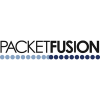




























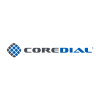











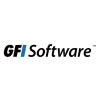














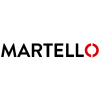














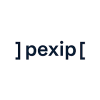

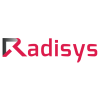

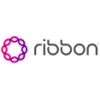
































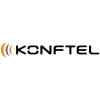



Comments
There are currently no comments on this article.
You must be a registered user to make comments
Add new comment